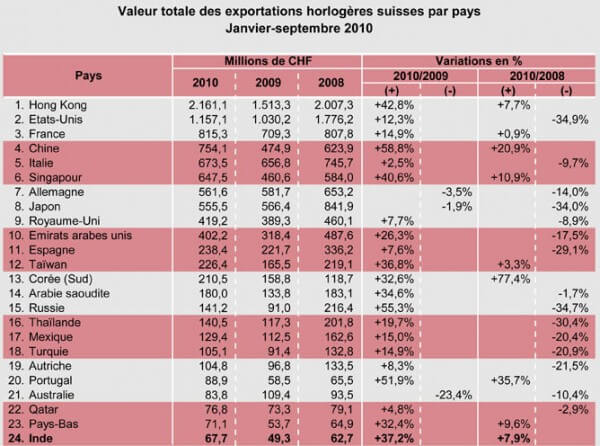“Complex” is how James Lamont, South Asia Bureau Chief for the Financial Times, describes the luxury market in India, a country he has covered for the past two years. Addressing the audience at the now traditional FT Luxury Watch Industry Lunch in Lausanne, an event to which the Fondation de la Haute Horlogerie is a partner, he described the prospects for the third biggest Asian economy with a population of 1.2 billion yet which represents just 2% of the luxury market. Swiss watch exports are a typical illustration of this situation, with India trailing in 24th place for the first eight months of 2010 at CHF 55 million.

A foot in the market
“This hasn’t always been the case,” commented James Lamont. “In the rajahs’ day, there was a veritable cult of luxury. The reigning families were among the biggest patrons of companies such as Cartier and Boucheron. The paradox comes from the fact that India is probably one of the countries that did most to bring luxury to Asia, only to be overtaken by other emerging economies, led by China. India’s independence in 1947, when Gandhi advocated a return to a more simple way of life, rejecting European values, marked a turning point. Currency control and import restrictions were then responsible for driving luxury away.”
Is the situation changing? James Lamont sees several encouraging signs to confirm predictions that within the next decade, India will grow into a $30 billion market for luxury. India has one of the fastest-growing economies of the large countries, and this growth is minting millionaires – 126,700 to date according to the Capgemini/Merrill Lynch World Wealth Report (12th position worldwide) – and billionaires: 69 according to Forbes which notes how “Indian entrepreneurs are displaying their ability to harness the unprecedented wealth creation opportunities that exist in this part of the world.” India’s potential has caught the attention of a number of premium brands in recent years. Some sixty, including Louis Vuitton, Chanel, Porsche and TAG Heuer, have set up in the country’s main urban centres.
Sizeable obstacles
“This doesn’t alter the fact that in terms of luxury, India is lagging a dozen years behind China,” commented James Lamont. “There are several reasons for this. There are just two large shopping centres in the entire country, meaning brands must sell from boutiques inside hotels, which are like fortresses. Everywhere else, retail environments are chaotic to the point that the wealthy prefer to make their purchases from home, or buy luxury goods overseas given the prohibitively high tax on them. Also, the Indians like to bargain and pay cash for most of their purchases. The Indian shopping experience is so far very much lacking. After being cut off from brands for fifty years, India consumers lack knowledge of them. There aren’t enough properly trained sales staff and the country has very specific tastes. Put all these factors together and India can seem like a very frustrating market for luxury firms. It’s also currently impossible to make inroads into the country without a local partner, which can in itself cause problems.”
Not that James Lamont is pessimistic for the future. “India is a virtually unexplored market for luxury with no real success stories to report so far. The new generations – 67% of the population is under 25 – are tomorrow’s consumers as purchasing power increases. They have been starved of brands, they want brands and will be loyal to them. When you think that Westend, a Valais-based brand which almost no one in Switzerland has heard of, is considered high-end in India, imagine how much Fine Watch brands can grow. In just one generation, the maharajahs adopted a western style. And it can all happen again!”











